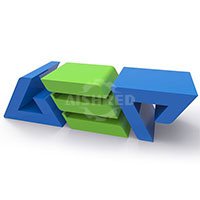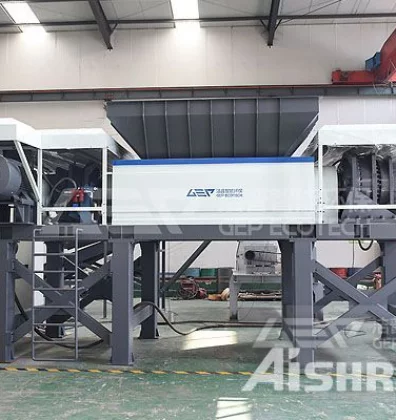Plastic waste management has become a significant environmental concern globally. Sorting plastic waste effectively is crucial to promote recycling and minimize pollution. This article aims to provide an optimized approach for utilizing a trommel screen to separate organic residue contaminants from plastic waste. The trommel screen, a cylindrical device with various-sized openings, can facilitate efficient separation while minimizing contamination.
- Proper Trommel Screen Sizing:
To optimize the separation process, it is essential to select an appropriate trommel screen size. The trommel screen's length, diameter, and the size of the openings should correspond with the specific plastic waste composition and the targeted organic residue contaminants. Conduct thorough analysis and consider the particle size distribution of the waste to determine the optimal screen parameters. - Pre-Screening and Sorting:
Before introducing the plastic waste into the trommel screen, it is advisable to pre-screen and sort the waste manually. This preliminary step can remove larger contaminants, such as bulky organic materials or non-recyclable wastes. By reducing the overall load and size, the efficiency of the trommel screen can be significantly enhanced. - Adjusting Trommel Rotation Speed:
The speed at which the trommel screen rotates plays a crucial role in the effectiveness of the separation process. Optimal rotation speed ensures that plastic waste is adequately agitated, allowing the organics to break free and be separated easily. Conduct experiments with various speeds to identify the ideal rotation rate that achieves maximum separation efficiency. - Maintaining Optimal Tilt Angle:
The trommel screen's tilt angle influences the material's travel speed and residence time within the screen. A suitable tilt angle ensures sufficient contact time for effective separation while preventing excessive material retention and potential blockages. Regularly monitor and adjust the tilt angle to optimize the separation process for different types of plastic waste. - Utilizing Multiple Trommel Screens:
In certain cases, using multiple trommel screens with varying screen sizes can improve the separation efficiency. Setting up a cascade system with progressively smaller screen sizes allows for multi-stage sorting, effectively separating plastic waste from organic residue contaminants based on particle size. This approach enhances the overall effectiveness of the trommel screen system.
Efficient separation of organic residue contaminants from plastic waste is essential for promoting recycling and reducing environmental pollution. Optimizing the use of a trommel screen by considering factors such as screen sizing, pre-screening, rotation speed, tilt angle, and multiple-screen setups can significantly improve the separation efficiency. By adopting these optimized approaches, we can contribute to a more sustainable and eco-friendly plastic waste management system.




